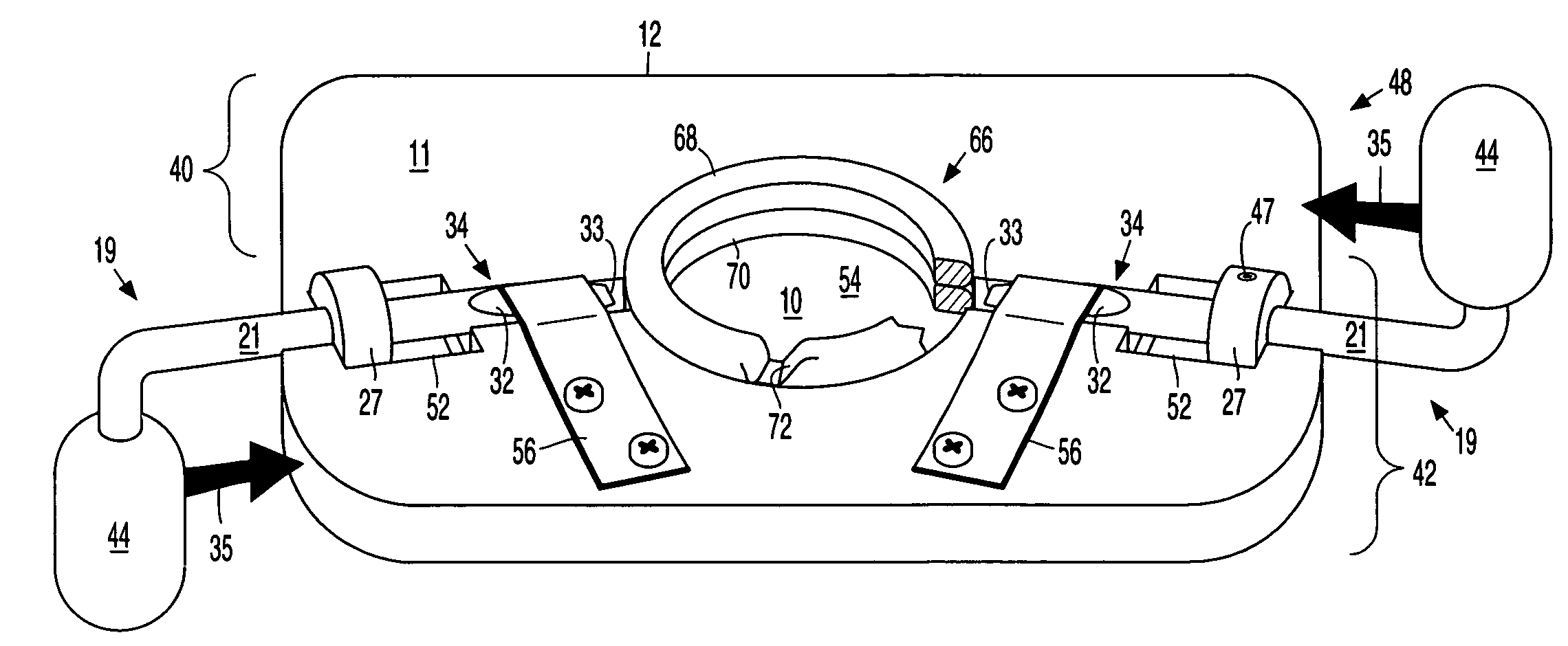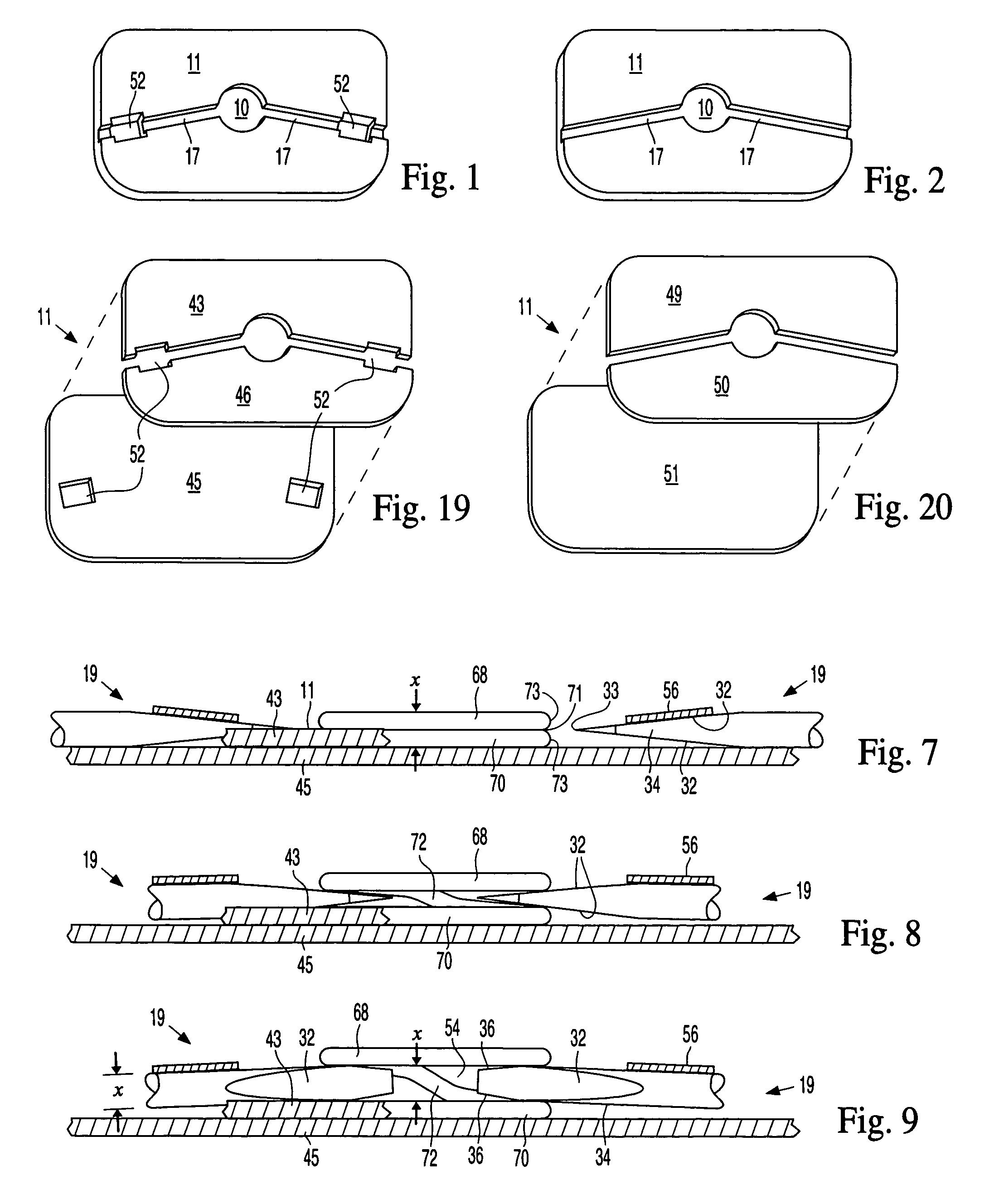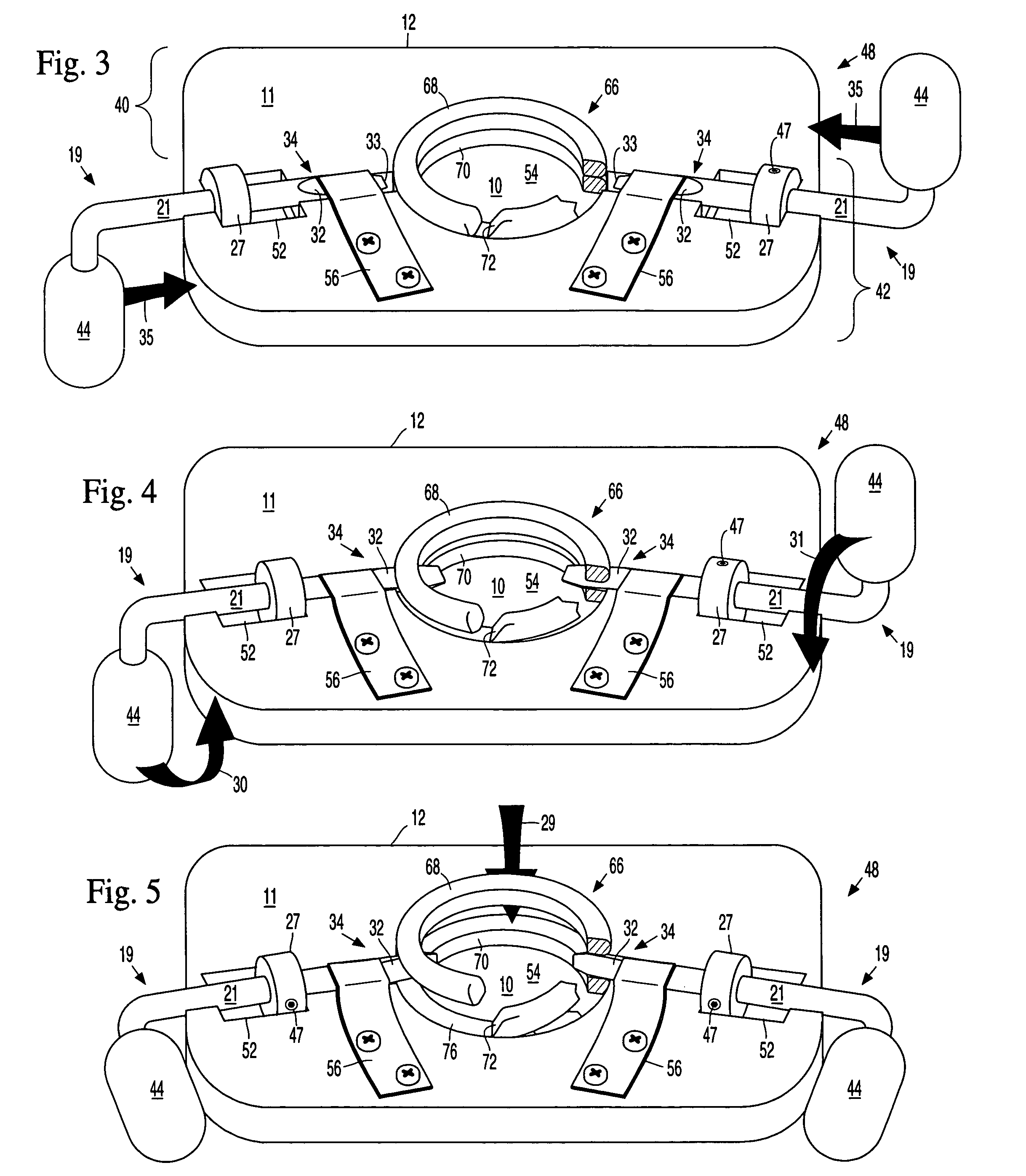Split ring and pellet method stitchless fastener coil separation tool
a technology of separating tools and ring coils, which is applied in the direction of manufacturing tools, keys, travelling objects, etc., can solve the problems of inconvenient bag handling, inability to disclose the anti-rotational properties of the tool tips, and inability to accurately position the tool tips where necessary prior to insertion between the coils. to achieve the effect of efficient bag handling and convenient bag handling
- Summary
- Abstract
- Description
- Claims
- Application Information
AI Technical Summary
Benefits of technology
Problems solved by technology
Method used
Image
Examples
Embodiment Construction
[0052]Each coil-spreading tool comprises a:[0053]flat plate 11 of an appropriate material and size, which can be molded, cast, or fabricated in one piece (FIGS. 1, 2), or it can be layered sheet materials (FIGS. 19, 20). In the layered embodiment, the top layer 43, 46, 49, 50 thickness is equal to the bottom coil 70 thickness (½ the split ring 66 height. See Guidance Channels 17 below and FIGS. 7, 13, 22). The floor plates 45, 51 can be any appropriate thickness;[0054]clip holding compartment 10 recessed into and centered on flat plate 11, its floor recessed a distance equal to the thickness of bottom coil 70 of split ring 66 when placed therein. Split Ring 66 (in this embodiment, round, 1 inch OD) should fit snugly in clip holding compartment 10;[0055]front platform area (FIG. 3, bracket 40) surrounds the front half of clip holding compartment 10, is flat and serves to guide bag corner 20 (FIGS. 6, 6a, 10, 22) with its bumps into its destination at the 12 o'clock position between t...
PUM
 Login to View More
Login to View More Abstract
Description
Claims
Application Information
 Login to View More
Login to View More - R&D
- Intellectual Property
- Life Sciences
- Materials
- Tech Scout
- Unparalleled Data Quality
- Higher Quality Content
- 60% Fewer Hallucinations
Browse by: Latest US Patents, China's latest patents, Technical Efficacy Thesaurus, Application Domain, Technology Topic, Popular Technical Reports.
© 2025 PatSnap. All rights reserved.Legal|Privacy policy|Modern Slavery Act Transparency Statement|Sitemap|About US| Contact US: help@patsnap.com



